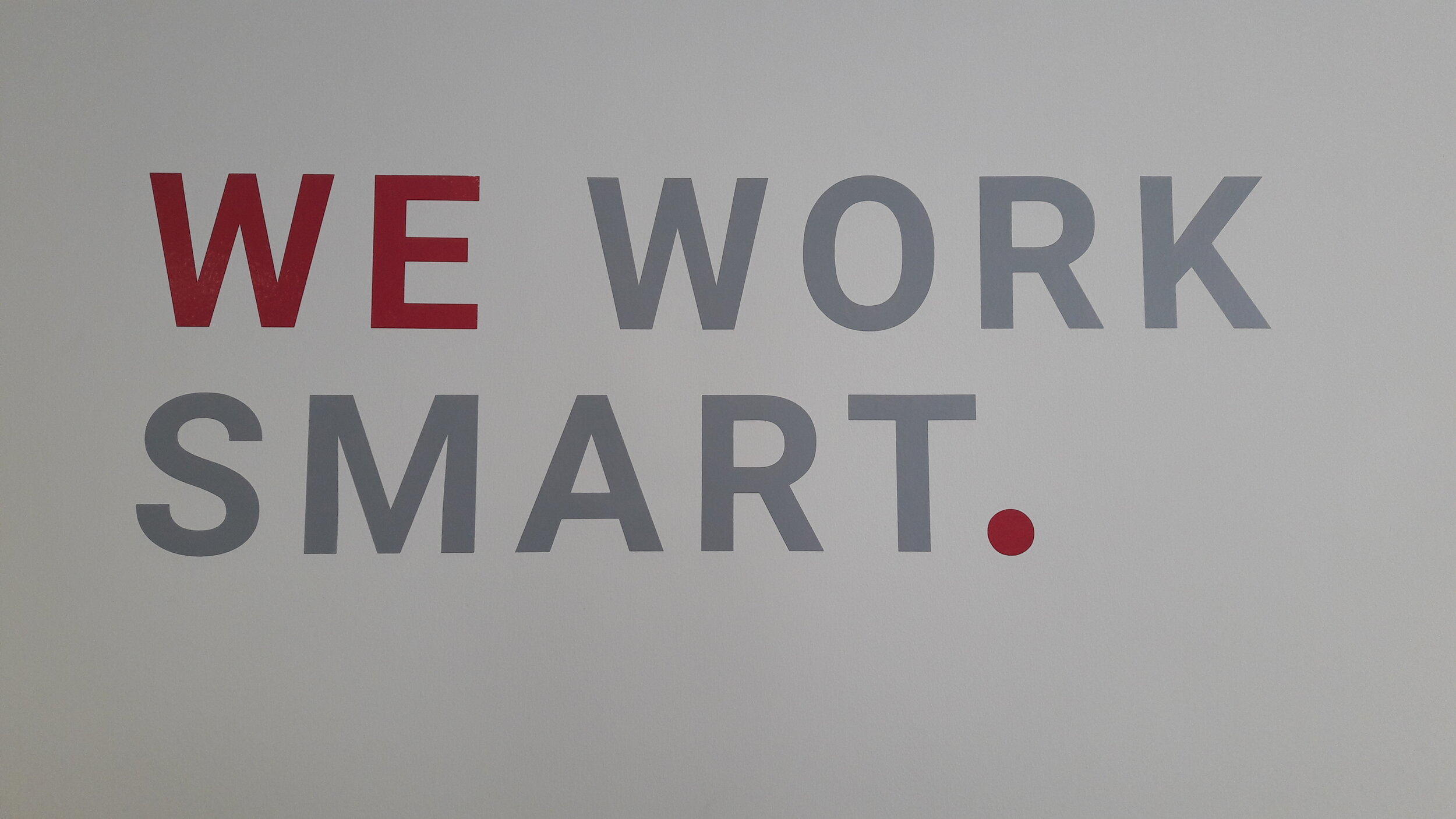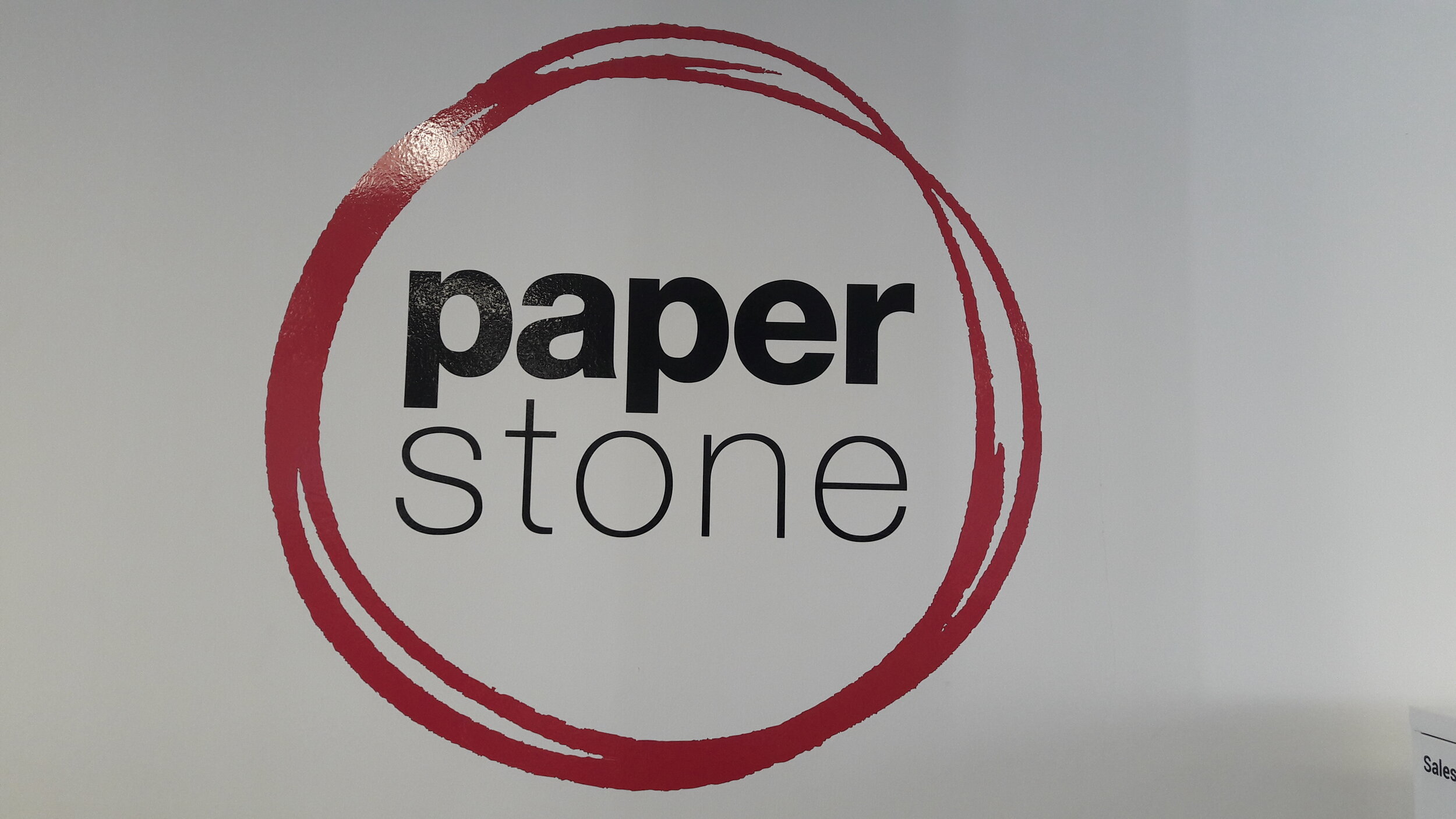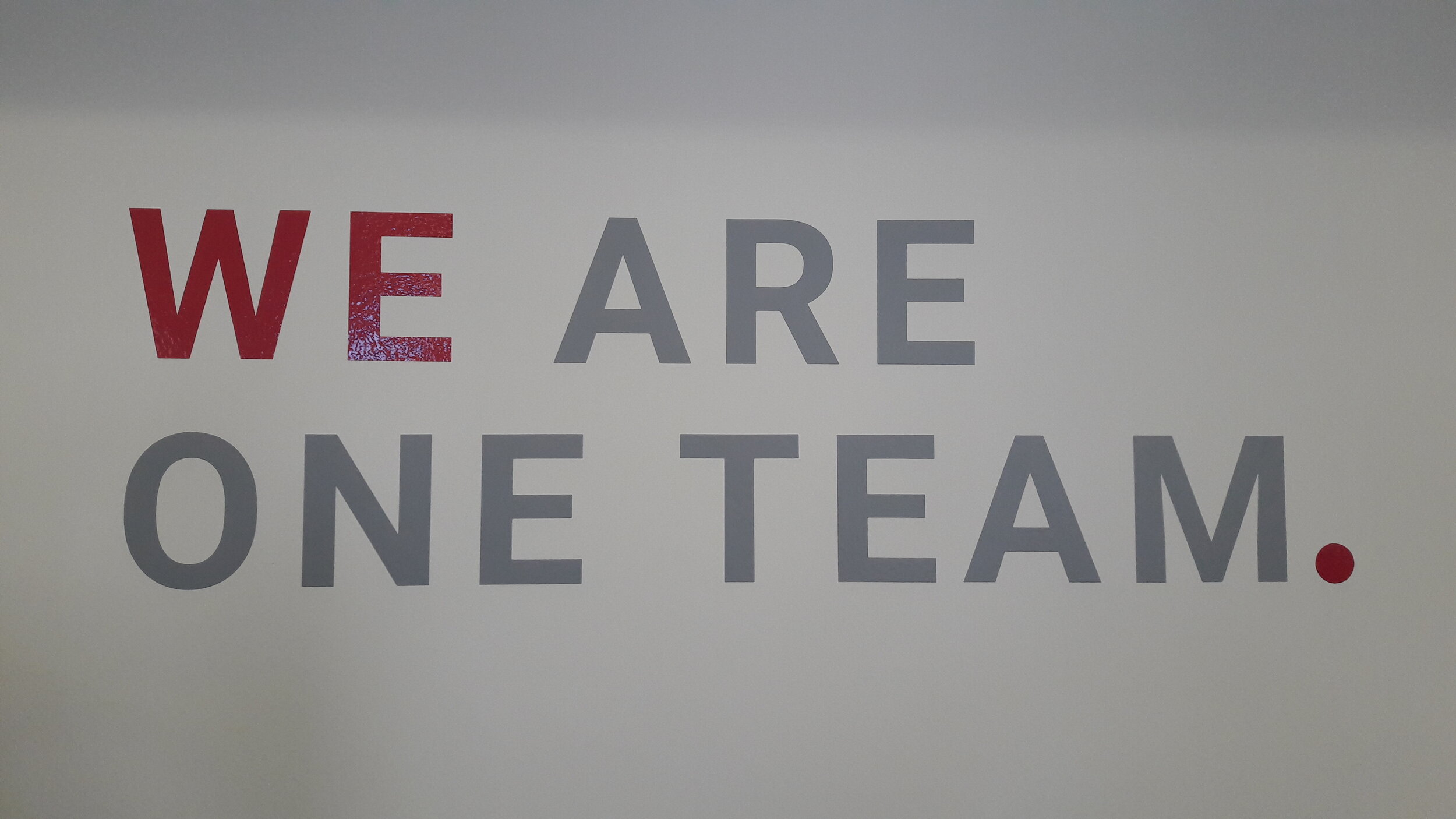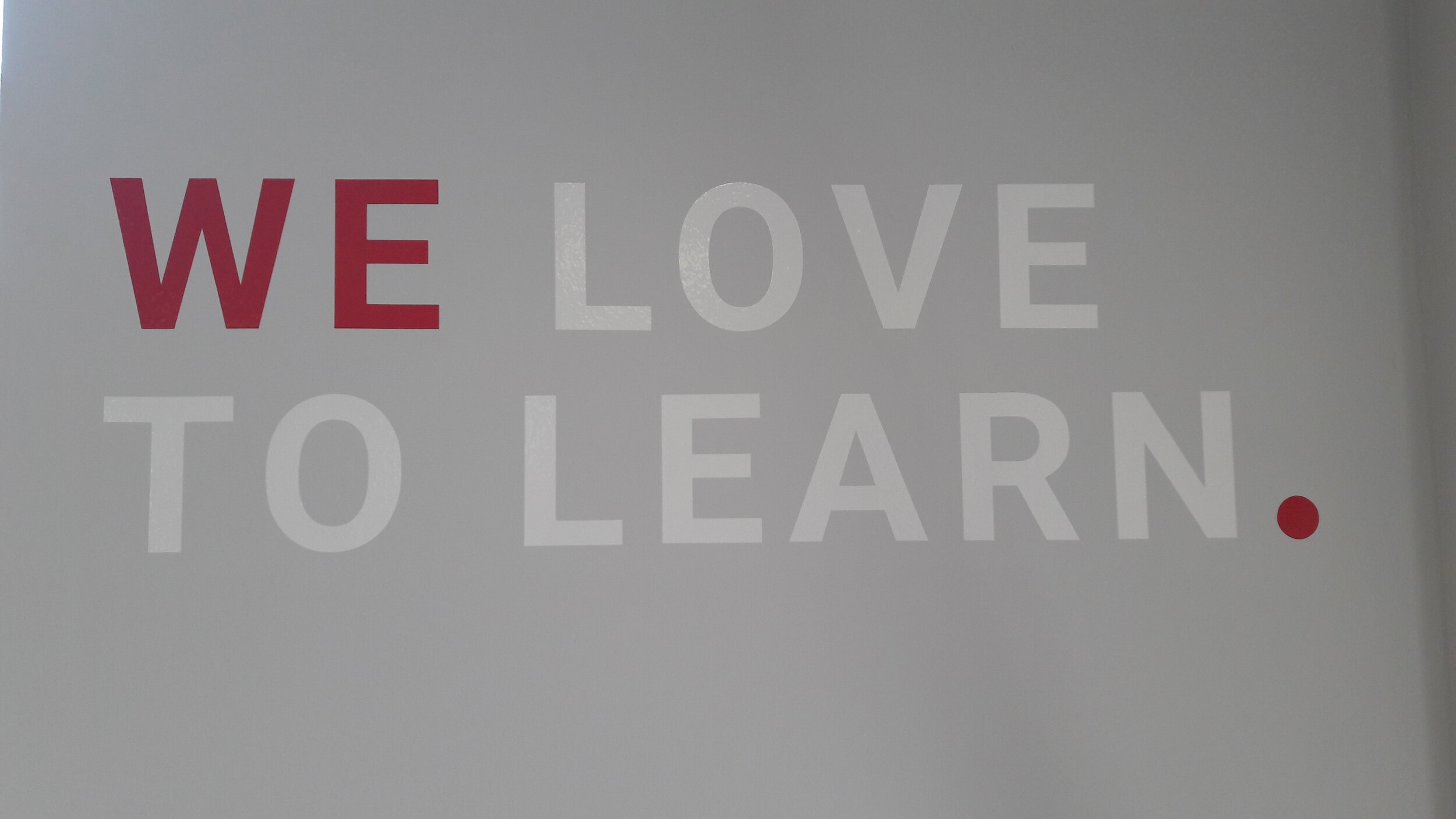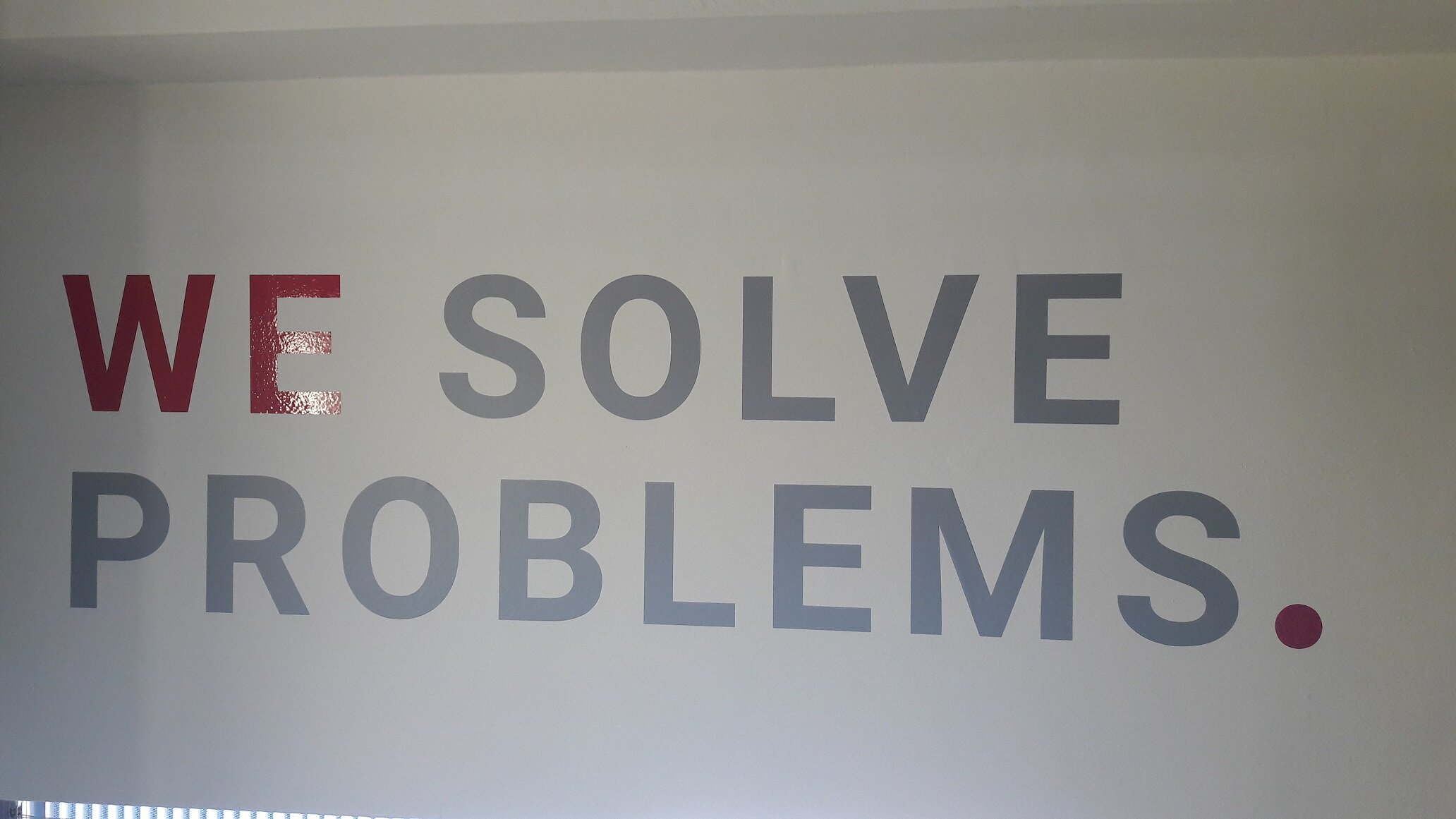My client Paperstone has emblazoned my words on their walls. They were so pleased with the values and behaviours I put together for them that they slapped them all over the office.
This online stationery company is growing. What started as a small team has grown over 15 years to become a much bigger operation. As they grow, they don’t want to lose sight of what makes them unique. I helped them put together the values and behaviours that set them apart.
These simple vignettes are more than wallpaper, they decorate the walls and help bring the team together.
Paperstone is very clear about who they are and how they show this. I came up with clear, bold statements that simply and effectively sum up their core values. These are all explained in more detail in the behaviours I wrote:
Value #1
We solve problems
Behaviour
“We’re a close-knit team with a culture of openness. We share the same goals and work hard to achieve them. We’re all busy, but we like to have fun and strike a good work-life balance.”
Day-to-day
Ideas and opinions are expected and valued from everyone. We are included and involved – wherever we work. Our flat structure means that every person is genuinely approachable.
Just like a family, we all look out for each other. We take time out to get together socially and have some fun
Value #2
We work smart
Behaviour
“We bring big ideas to life with small steps whilst using our time and resources wisely.”
Day-to-day
We plan and prioritise, using our time and budget carefully; making full use of technology.
We understand the importance of listening and learning from each other. Empathetic and understanding, we share a positive outlook.
Value #3
We’re one team
Behaviour
“Our creative thinking and flexibility help us to find the best solution for our customers, the company and each other.”
Day-to-day
Empowered to take ownership of problems, we share a desire to succeed. We work together to make the right decisions and get the job done.
We fully support open communication and cooperation. We hold regular events (formal and informal) to keep everyone informed and engaged.
Value #4
We love to learn
Behaviour
“We look to the future and evolve to meet new challenges. Continually learning from successes and failures, we welcome change.”
Day-to-day
Training is central to our success. We invest in each other to ensure everyone maximises their potential.
We all feedback to each other, celebrating success and learning from failure. By communicating and sharing knowledge, we learn how to improve and change for the better.
Struggling to express your brand and personality? I can help.


